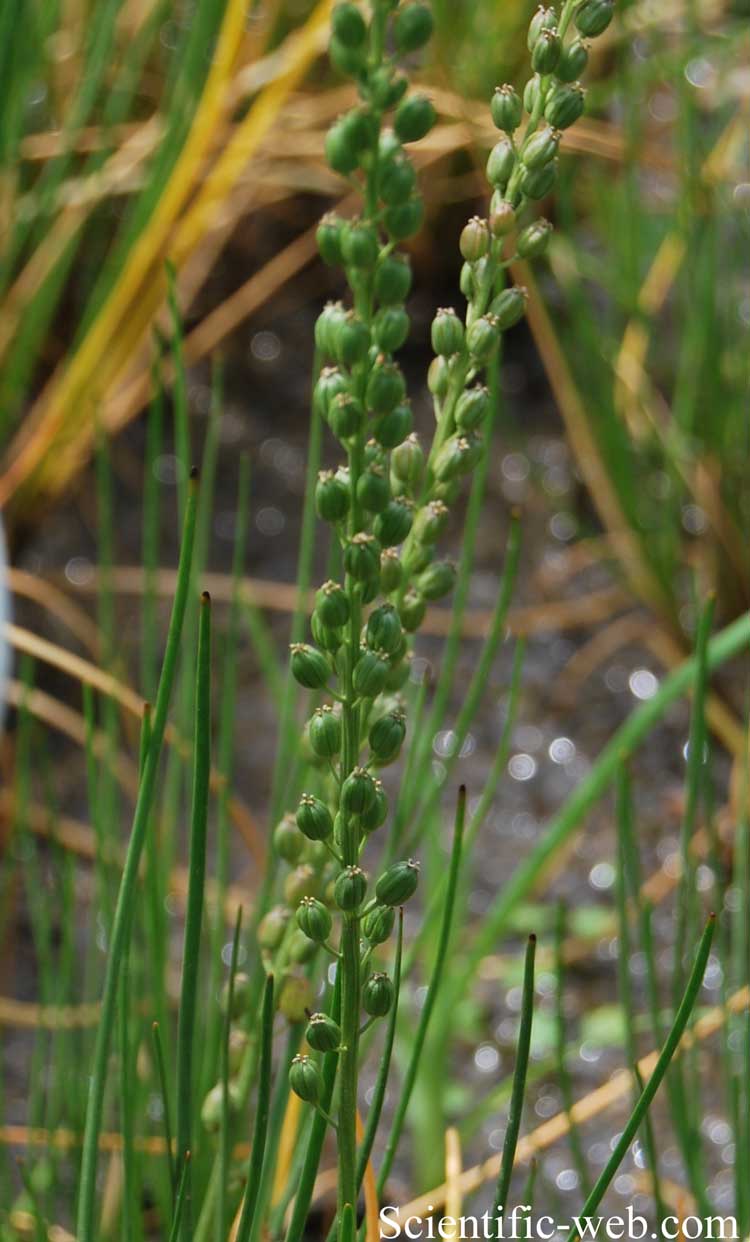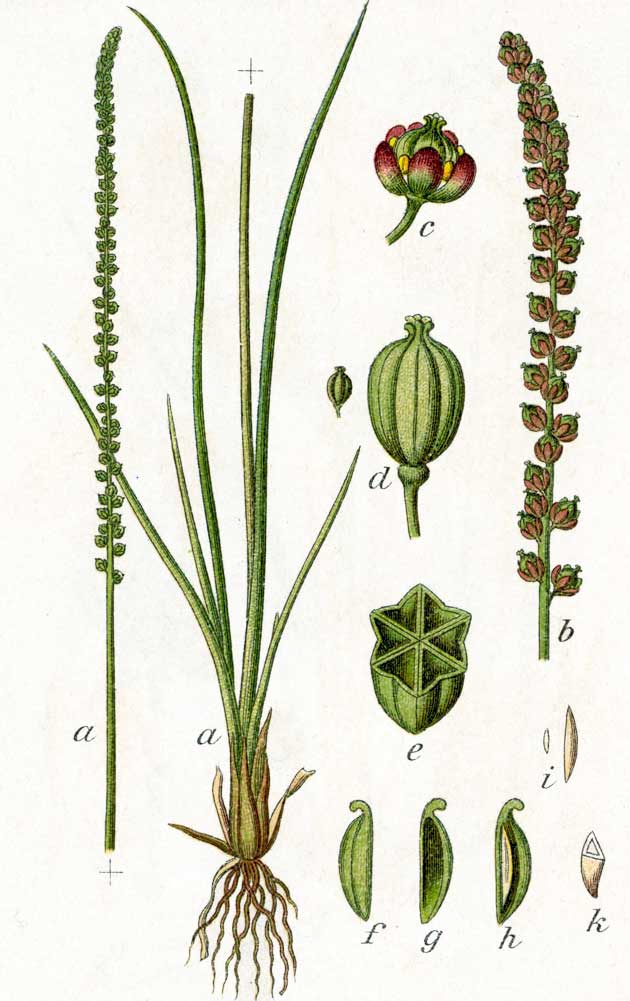
Triglochin maritima, Photo: Michael Lahanas
Classification System: APG IV
Superregnum: Eukaryota
Regnum: Plantae
Cladus: Angiosperms
Cladus: Monocots
Ordo: Alismatales
Familia: <a href="Juncaginaceae.html">Juncaginaceae</a>
Genus: Triglochin
Species: Triglochin maritima
Name
Triglochin maritima L.
References
Linnaeus, C. 1753. Species Plantarum. Tomus I: 339. Reference page.
USDA, ARS, Germplasm Resources Information Network. Triglochin maritima in the Germplasm Resources Information Network (GRIN), U.S. Department of Agriculture Agricultural Research Service. Accessed: 09-Oct-10.
Vernacular names
čeština: bařička přímořská
dansk: Strand-Trehage
Deutsch: Strand-Dreizack
English: seaside arrowgrass, sea arrowgrass
suomi: Merisuolake
français: Troscart maritime
hornjoserbsce: Mórska bažička
한국어: 지채
lietuvių: Pajūrinė narytžolė
Nederlands: Schorrenzoutgras
norsk: Fjæresauløk
Diné bizaad: Teełikaní
polski: świbka morska
русский: Триостренник приморский
svenska: Havssälting
中文: 海韭菜

Triglochin maritima
Triglochin maritima is a species of flowering plant in the arrowgrass family Juncaginaceae. It is found in brackish marshes, freshwater marshes, wet sandy beaches, fens, damp grassland and bogs. It has a circumboreal distribution, occurring throughout the northern Northern Hemisphere. In the British Isles it is common on the coast, but very rare inland.
Description
It is similar to marsh arrowgrass (Triglochin palustris) but has the following differences: it has stolons, is stouter. The leaves are fleshy and not furrowed above. It is not very aromatic. The raceme are more dense and like sea plantain. The flowers are fleshier.[1] The fruits are oval, 4 mm long, 2 mm wide.[2]
It varies in height from 200–750 mm (8–30 in). It flowers in May to August; flowers are greenish, 3 petalled, edged with purple, 3 mm (1⁄8 in) across, in a long spike.[3][4] Common names include seaside arrowgrass,[5] common arrowgrass, sea arrowgrass and shore arrowgrass.
It can be an annual or perennial.[6]
Triglochin concinna is a synonym of this species.[7]
This plant is toxic, as it can produce cyanide. This species has been known to cause losses in cattle, with green leaves being more toxic than dried material.[1]
References
Wikimedia Commons has media related to Triglochin maritima.
C. Dwight Marsh, A. B. Clawson, and G. C. Roe Jr (1929). Arrow grass as a Stock-Poisoning Plant. United States Department of Agriculture.
Rose, Francis (2006). The Wild Flower Key. Frederick Warne & Co. p. 488. ISBN 978-0-7232-5175-0.
Common Arrow-grass (Triglochin maritima)
Sterry, Paul (2006). Complete British Wild Flowers. HarperCollins Publishers Ltd. p. 188. ISBN 978-0-00-781484-8.
"Triglochin maritima". Natural Resources Conservation Service PLANTS Database. USDA. Retrieved 15 December 2015.
Phillips, Roger (1994). Wild Flowers of Britain. Macmillan Reference Books. p. 52. ISBN 0-330-25183-X.
"Triglochin maritima in Flora of North America". www.efloras.org. Retrieved 2018-09-22.
Retrieved from "http://en.wikipedia.org/"
All text is available under the terms of the GNU Free Documentation License

